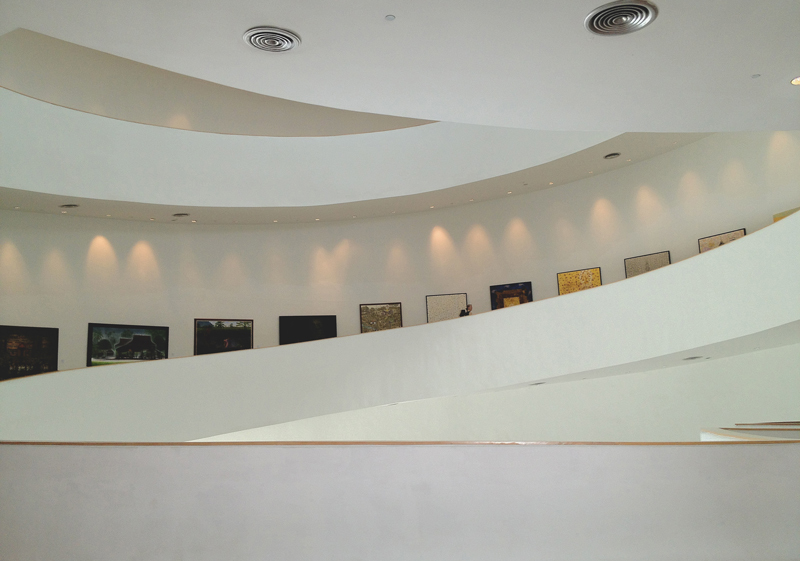Månadens Post
Design is Love
Publicerat 2007.12.17
By V Ramaswamy, Calcutta, India
A year ago I visited an IKEA store for the first time. I was immediately captivated by what struck me as a perfect fusion of the meta-, visionary and the micro-, nitty-gritty. DESIGN, in its grand, fullest expression. Giving customers the greatest value for money, without compromising on quality or aesthetics. Thinking out and diligently working on customers’ behalf, in ways and a depth the customers themselves would never imagine, and all this so as to deliver maximal economy, convenience and satisfaction, i.e. VALUE. A product could be very good, and yet really inexpensive, and vastly superior in fact to conventional expensive products.
It was as if, finally, for the first time, one found concord with one’s own beliefs and ideals, which had now been rendered real and material. As if one found cheer and delight in a cheerless world, like nourishment to a starving soul. I felt IKEA was a precious school for the building of the emerging global economy, which, sadly, is still only about quick profits to the rich and powerful, in any which way.
My own experience ever since I began discerning, thinking about and engaging the reality surrounding me, an Indian, has in fact been quite the opposite. Here too one would find “good design”, but in an entirely venal form. Here too is a perfect fusion, but of evil intent and meticulously crafted horrid method. Here too is design, but oriented to maximise exploitation of consumers as well as degradation of society as a whole.
Let me give an example. If you went out to the market to buy some electrical product, say a plug fitting, you would come upon a wide array of items, ranging in price from very expensive to very cheap. One might think that after all, there are lots of poor and low-income people in this country, so it’s not unnatural, and actually quite good that low-price products are available. But it’s not so simple or natural.
Yes, a poor person would be automatically drawn to a low-price item. But he would typically be unaware of the quality of the product, and especially the safety aspects. In reality, the product is patently unsafe, with potentially fatal consequences. It´s manufacture is based entirely on the assumption and objective of exploiting the humble buyer’s poor education and awareness and consequent ignorance of things like safety. But there is an even more sinister dimension. It’s not the poor who are the real purchasers of this product. These are used in large-scale projects, such as construction of government offices or public sector enterprises. The chain of happy gain through corruption and exploitation runs from the manufacturers to contractors to senior officials who sanction the purchase. The practice thrives because everyone knows they can get away with impunity. They can get away because of moribund enforcement institutions and lack of accountability, arising from mass poverty and illiteracy. The thinking or ethos is that only a fool would not try to benefit from the wonderful profit opportunities out there. Civic consciousness, and a law-abiding citizenry that is aware of its rights and jealously protective of these rights, are non-existent. Lack of education is thus the foundation for business enterprise and governance.
Hence, not surprisingly, even the not-so-cheap products too would be found to be actually quite shoddy and unsafe. Corruption seeps into and corrodes the very fibre of society. Little wonder then, that we are faced with an epic crisis, where there is no ownership in the society for the goal of education for all.
Let me share a bit of personal experience, of being in charge of a community-based environmental improvement project in slum neighbourhoods of Howrah, a million-plus city near Calcutta. A “service latrine” is a toilet that has to be manually cleaned out, by lowly sweepers. This is an arrangement that was widespread in old towns and cities across India. The image of a person carrying a basket of excreta on his/her head, had been the subject of a call to conscience by Mahatma Gandhi. But it was only in 1993 that the govt. of India finally enacted a law banning such “manual scavenging”.
The govt. also introduced a programme to be implemented through the urban local bodies to subsidise the conversion of these service latrines into sanitary toilets. But service latrines continued to be in use on a massive scale in Howrah, with all the attendant adverse environmental health risks to the community and the conservancy workers (apart from the violation of the latter’s human dignity).
The problem was that in many cases, there were a large number of people using the service latrine. In the slums of Howrah, a plot would typically house 15-20 households, and over 100 persons would be using the latrine, typically a hole in the floor of a small raised cubicle-shed. The govt. subsidy was, however, designed keeping a single (5-7 member) household in view. The slum plots were also congested with the hutments, leaving no spare space. Hence service latrines simply continued to exist and be used.
In some of the worst areas, the service latrines made the neighbourhood extremely foul and dangerous. These were the areas where the incidence of water-borne and gastro-intestinal diseases was high, with high infant mortality and morbidity.
Not surprisingly, it was emphasised by the slum communities that proper toilets were the most vital need of the people. Through dialogue and interactions with the households, it became clear that they were willing do as much as they could for the toilets.
The technical solution, under the circumstances, was a twin-pit latrine. This meant knocking down the existing toilet structure, cleaning up the spot, constructing two large, deep brick pits and erecting a multi-seat toilet shed block over the pits. The inert soil generated in turn in the non-used pits would be removed by the dwellers and used or sold as manure. As the plot was very congested, space had to be created to accommodate the two large pits (needed because of the large number of users). Some structures would have to be knocked down or shifted.
The construction cost of such a toilet was about Rupees 22,000 per unit (in 1997), while the govt subsidy was about Rupees 5,000. The slum landlords were persuaded to pay Rupees 5,000. Ten demonstration units were constructed, with the local people’s assistance and involvement. We had found and demonstrated the solution to an apparently insoluble but serious problem. I felt like a scientist who has made an earth-shattering new discovery, expanding the frontiers of knowledge and transforming human life.
Thereafter, surveys were conducted in slum pockets of Howrah, The cost factor was explained. With the necessary cost likely to be about Rupees 25,000, and Rupees 5,000 coming from the govt. subsidy and another Rupees 5,000 from the landlord, the remaining Rupees 15,000 would have to be contributed by the user households, who were willing to do so. A leading housing finance company was persuaded to extend credit, which the households would repay. The metropolitan development authority agreed to provide the govt subsidy in advance.
The scheme was detailed and submitted to the Howrah Municipal Corporation. One municipal ward was to be taken up for complete elimination of service latrines in slums. And that would enable an appropriate city-wide scaling-up subsequently. But nothing happened. Despite repeated efforts, over many months, and letters and meetings with officials – the service latrine elimination programme was a non-starter.
Much later, it became clear that this had been simply sabotaged by people within the Corporation. There was a happy and neat arrangement between officials and contractors, to appropriate the subsidy. A bogus toilet would be built – which would be non-functional immediately after. The subsidy was then approved, released and pocketed. Our programme would have interfered with this happy arrangement. Hence it was simply killed.
I tried hard to make a difference, but failed completely, whether because of my own incapability or the sheer enormity and deep-rootedness of the problem, or serious systemic failures and widespread apathy – I don’t know. But I got completely burnt out in the process.
Everything boils down to just one thing: love, which is the greatest profit. It is given and received freely, joyfully. But love also demands and exacts a great price from the one who dares to love. IKEA would know that.
V Ramaswamy is a Calcutta-based business executive, social planner, grassroots organiser, teacher and writer. Read more Ramaswamy here


